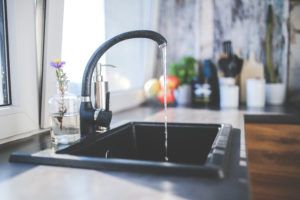As the fall season approaches, it’s important to evaluate your pipes, appliances, and water main for potential leaks. Maintaining the condition of these devices is essential when trying to regulate the flow of water while also protecting your property from potential leak damage.
Almost every homeowner should be able to recognize if there are plumbing issues on their property. Naturally, consistently checking and inspecting your home plumbing equipment can help preserve the equilibrium of your home. If you don’t know where to start, use these tips to check your home for any potential leaks that may negatively affect your infrastructure.
Check Your Water Bill
One of the first steps every homeowner should take to preserve their water supply is checking their water bill. Because water bills are relatively predictable, it’s easier to recognize if there are issues if you check consistently. If you notice one of your bills is unusually higher than your traditional payment, this may mean that a leak is prominent.
According to the EPA (Environmental Protection Agency), the average American uses around 88 gallons per day per person in the household. This means that a family of four would use around 10,500 gallons in a month. Depending on your location and weather patterns, it’s equally as important to recognize your usage trends. This will give you a better idea of what your monthly water usage is while investigating where leaks can occur.
Monitor Your Water Meter
Another reliable way to check for a potential leak is by reading your water meter. If you suspect a leak in your property, find and check your water meter for efficiency. This meter is usually located beneath a cover that is in the street or on the side/back of your home connected to the main water supply. There are specific steps that every homeowner should take when monitoring their water meter patterns.
- The first step is to turn off all of your faucets and ensure your dishwasher and washing machine are off.
- Secondly, check your water meter and record the numbers you see, then let an hour pass. Once the hour has passed, check again, if the numbers differentiate then a leak is most likely present.
- Third, (for homes with meters on the street) to get a better idea of where the leak is located, find your main water supply line and turn off your water shut-off valve.
- Lastly, repeat step two, if the data does not change then the leak is most likely in your home, but if it did change, that’s a sign that the leak in the buried water lines connected to your home.
Analyze Your Appliances
If you assess your water meter and the results show that there is a leak inside of your home, you have to analyze your appliances and any plumbing fixtures. In order to find exposed leaks, check your appliances and fixtures for damage or other areas where leaks could be present. The most common appliances where leaks can be found are sinks, refrigerators, washing machines, and bathroom sinks. Prioritize looking for puddles around the bases of showers, tubs and toilets.
If you do discover puddles or formidable damage, turn off the water supply valve to that appliance and call a professional plumber. If you notice one or more of your devices need a repair or replacement, explore new appliance preferences. In order to find the right appliances for your home, you should review potential financial options. A fixed rate HELOC is a reliable choice for investing in new home appliances because you can borrow up to 85% of your home’s value while having increasingly low interest rates. A personal loan is also another great way to fund expensive appliance purchases because funding is provided in one lump sum and is quicker than its counterparts. Establish peace of mind knowing that it’s out with the old and in with the new.
Watch For General Leaking Clues
Residential leaks can be sneaky, because they display discrete signs of damage in several different ways. Depending on the cause of the leak, some become much more visible than others. Be mindful of clues that may represent that there is either a water, plumbing or septic leak.
If you don’t know what to look for, use these clues to combat the threat of leaky damage in your home.
A dripping sound, in some cases, leaks create almost no sound, but others do the opposite. If a water leak is traveling through your walls, listen for potential drops to get a better understanding of where it’s coming from.
A musty odor can be created by a leak that is untouched for a period of time, thus creating black spots and an unpleasant smell in that area.
A sure sign that your wallpaper or paint is losing its adhesive effects is by recognizing a bulge in your wallboard. This is a direct indication that there is a leak and your water damage may require some sort of wall replacement.
If you notice yellow or brown discoloration on ceilings and walls, there may be water leaking from behind your drywall running to the front side.
Conclusion
Protecting your home from a variety of potential plumbing leaks can be difficult, but understanding all of the signs can help. Looking into leak protectors or choosing the right plumber are two solutions to prevent water exposure damage. For more plumbing insight an industry news, visit your friends at Douglas Orr Plumbing for professional care.

